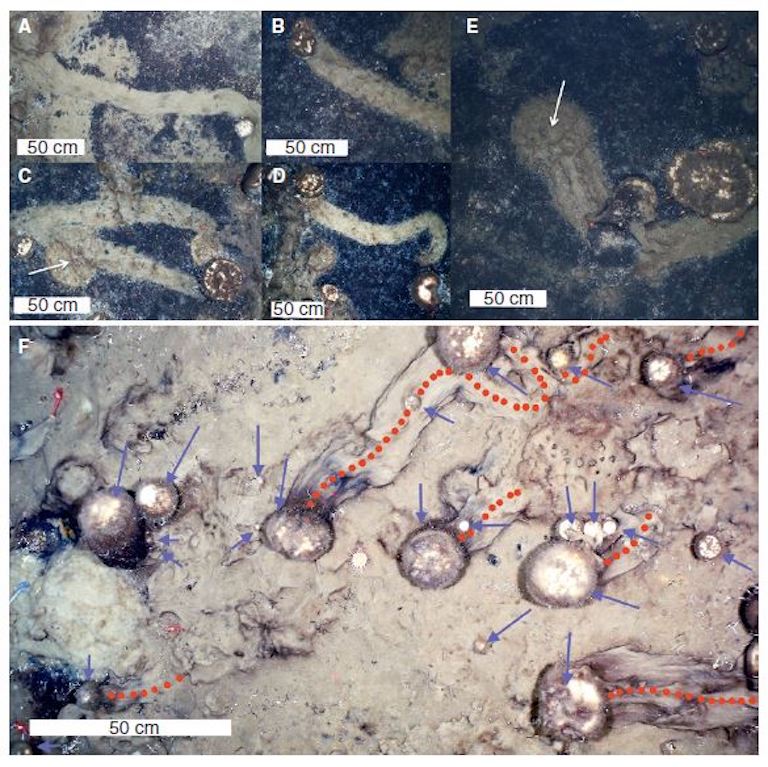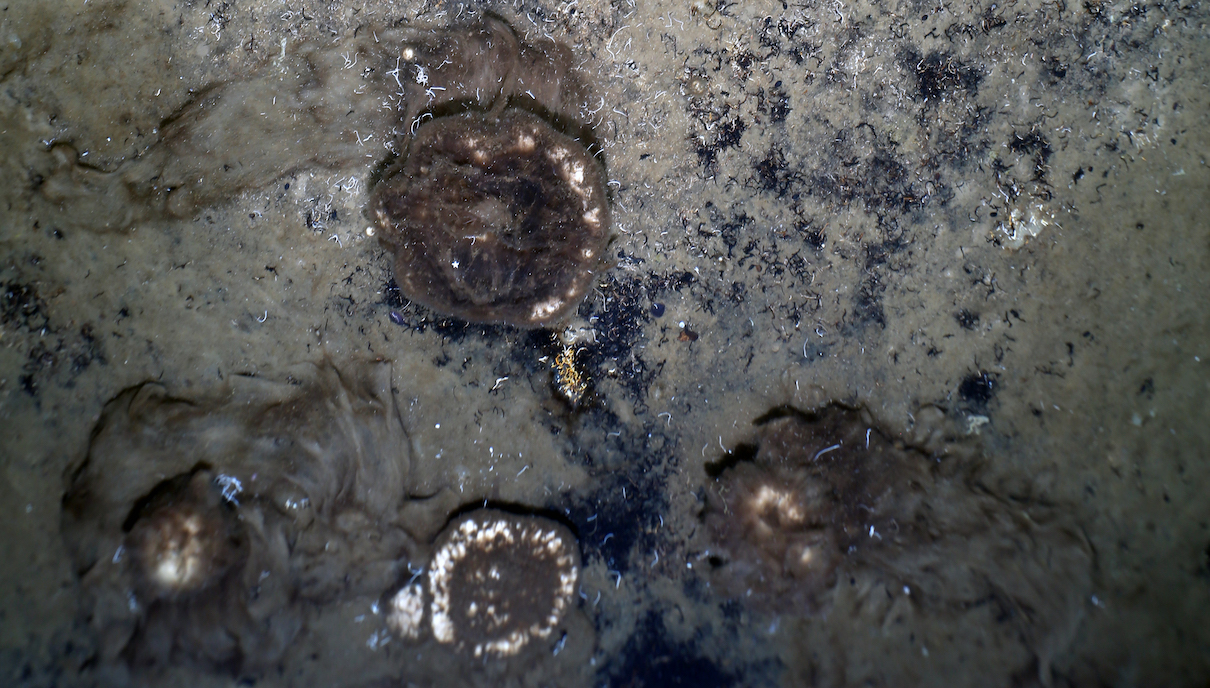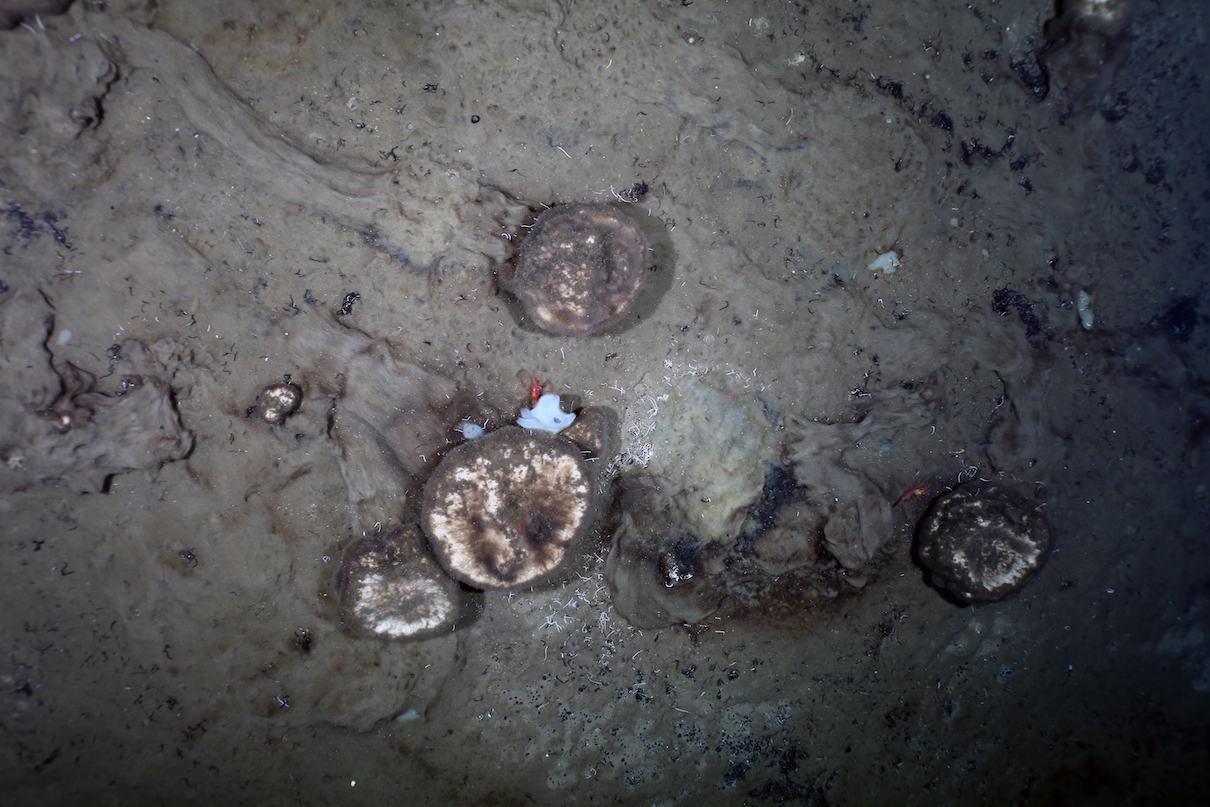- A new study suggests that sea sponges are moving across the seafloor of the Arctic Ocean, which challenges the idea that these creatures are primarily immobile.
- Previous research has shown that sponges can make limited movements in a laboratory setting, but this is the first time sea sponge trails have been observed in the ocean and attributed to sponge movement.
- The researchers hypothesize that the sponges are moving to find food or disperse juveniles, although further research is needed before conclusions can be drawn.
Sea sponges don’t move. At least, that’s what a lot of people used to think about these aquatic invertebrates. But a new study has upended this assumption, and pushed and prodded scientific thought into a new direction.
In 2016, a team of scientists aboard the RV Polarstern, a German research icebreaker, visited Langseth Ridge, an ice-covered seamount in the Arctic Ocean, a few hundred miles from the North Pole. The area was covered in large sea sponges, despite having lower productivity and nutrient fluxes than other sea sponge grounds in the North Atlantic Ocean. The main species in the region were identified as Geodia parva, G. hentscheli, and Stelletta rhaphidiophora.
But the abundance of sponges wasn’t the biggest surprise. Underwater imagery showed trails of spicules — structural, skeleton-like spikes that sponges can shed — meandering along the seafloor. It looked as if the sea sponges were moving. These spicule trails were visible in about 70% of the images taken of the sea sponges, according to a paper recently published in Current Biology.

“I was surprised, but it was very clear,” study co-author Autun Purser, a marine ecologist at the Alfred Wegener Helmholtz Centre for Polar and Marine Research in Germany, told Mongabay in an interview. “What we didn’t know straight away was wherever these trails were all pointing downhill or something like that, as if the sponge had slipped downhill.”
The team analyzed the seafloor and found that the sponges were not sliding downhill. Instead, many appeared to be crawling uphill and even on top of each other.
“That really made it clear that this was an interesting story,” Purser said.
While sea sponge larvae are known to be mobile, adults have generally been believed to be sessile, or immobile, since they lack muscles or other specialized organs that would help them get around. That said, one study found that sea sponges made limited movements by expanding and contracting their bodies in a laboratory setting.
Another study, co-authored by sea sponge expert Sally Leys, found that sea sponges drifted and rolled across the seafloor in the northeast Pacific Ocean. Still, it doesn’t specify an exact reason for why these sponges are moving. However, Leys says that lead author Amanda Kahn suspected that the sponges “were moving themselves.”

“I know that sponges move; people have known for a long time that if a sponge is put in an aquarium, it will migrate over to the side that has the most flow, and it does that by cells crawling and laying down new skeleton and leaving the old behind,” Leys, a professor at the University of Alberta, who wasn’t involved in the Current Biology study, told Mongabay in an email. “But [what] is really surprising, to anyone, [is] that a large spherical ball of tissue — albeit organized into an efficient filter feeding system with incurrent and excurrent canals — can actually shift itself, very slowly, to a new spot on the seafloor. How cool is that?”
Joana Xavier, a researcher specializing in deep-sea biodiversity at the University of Porto’s Interdisciplinary Centre of Marine and Environmental Research, who was also not involved in the study, said nothing like these trails had ever been previously reported.
“This shows just how much is still to discover of the biology of this fascinating group (the Porifera/sponges) and the ecology of the habitats they form,” she said. “Interestingly, trails like these were never observed in similar sponge grounds located on other seamounts located at lower latitudes.”
The researchers of the Current Biology study hypothesize that the sponges are moving to find food or to disperse juveniles, but Purser says there’s still plenty to investigate.

“This is the first observation — we were only there for a week in this area,” Purser said. “So what we really need to do is go back, put cameras down to photograph the sponges over time, and really see how they are doing it.”
“I really like the paper,” Leys says. “I do wonder what might trigger the sponge to move, in such a deep environment. It’s one thing to move to the other side of an aquarium where the flow is obviously better. But on the deep seafloor what could the stimulus be? Maybe it is just that food is better in the mud to one side of the sponge, so they keep moving that way. It’s fun to think about!”
Citations:
Bond, C., & Harris, A. K. (1988). Locomotion of sponges and its physical mechanism. Journal of Experimental Zoology, 246(3), 271-284. doi:10.1002/jez.1402460307
Kahn, A. S., Pennelly, C. W., McGill, P. R., & Leys, S. P. (2020). Behaviors of sessile benthic animals in the abyssal Northeast Pacific Ocean. Deep Sea Research Part II: Topical Studies in Oceanography, 173, 104729. doi:10.1016/j.dsr2.2019.104729
Morganti, T. M., Purser, A., Rapp, H. T., German, C. R., Jakuba, M. V., Hehemann, L., … Boetius, A. (2021). In situ observation of sponge trails suggests common sponge locomotion in the deep central Arctic. Current Biology, 31(8), R368-R370. doi:10.1016/j.cub.2021.03.014
Banner image caption: Trails left by sponges as they crawl across the seafloor Image by AWI OFOBS team.
Elizabeth Claire Alberts is a staff writer for Mongabay. Follow her on Twitter @ECAlberts.
FEEDBACK: Use this form to send a message to the author of this post. If you want to post a public comment, you can do that at the bottom of the page.
The Link LonkMay 05, 2021 at 09:49PM
https://ift.tt/3b0jWhy
Absorbent and yellow and … mobile? Sea sponges on the move in Arctic Ocean - Mongabay.com
https://ift.tt/2CoSmg4
Sea
/cloudfront-us-east-2.images.arcpublishing.com/reuters/CZF6NULMVVMEXHOP7JK5BSPQUM.jpg)
No comments:
Post a Comment